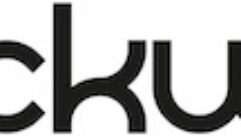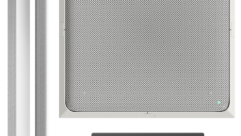

Yamaha IMX644 Mixer & IPA8200 Amp
Mar 29, 2011 11:08 AM,
by John McJunkin
Yamaha IMX644 Mixer & IPA8200 Amp
Yamaha has introduced a new mixer and amplifier for the install market, namely the IMX644 mixer and IPA8200 amp. The amp offers 8 channels, and the digital IMX644 offers powerful computer-control conventions and a highly simplified front-panel interface intended to make operation easy for non-professionals. It is commonly the case that untrained or inexperienced individuals are required to operate systems such as these, and simplicity of operation is a key attribute. The mixer can interface with a computer in order to easily access a deeper list of parameters, so skilled operators can dig in and make minute adjustments to optimize the sound.
The IMX644’s 2U front panel features, from left to right, a lock switch and indicator, USB port, orange LEDs to indicate matrix assignments, six mono input level knobs, four stereo input level knobs, four six-segment LED output level meters, four output level knobs, two signal/peak indicator LEDs, four memory recall buttons, and a power switch. In all, this is pretty simple—exactly the intention to simplify operation for non-professionals. From left to right, the rear panel features an AC power in, ground screw, RS-232 and GPI terminals, four stereo RCA inputs, a single RCA stereo recording output, optical input and output jacks, twelve Euroblock terminals representing six inputs and six outputs, and phantom power and pad switches for each input.
The IMX644’s six mono inputs are nominally intended for microphones, with 48V phantom power available for condenser mics and a 34dB pad for particularly hot mics. The four stereo inputs are intended for music or other pre-recorded content, for instance from CD players, satellite or radio receivers, and computers. Any such audio source that offers an optical output can be connected via the unit to minimize signal degradation. This input features a sample rate converter, so no word clock sync is necessary. Up to 16 sets of mixer settings can be stored in the unit, with any four available by pushing one of the four recall buttons on the front panel. This facilitates initial configuration by an audio professional, then recall at the appropriate time by a non-professional. The system offers three bands of parametric EQ on the mono inputs and two-band parametric EQ on the stereo inputs. Six bands of parametric EQ are available on each of the system’s outputs. All six mono input channels feature two-stage feedback suppression. The first stage consists of static filters that can be set in advance, and the second stage is a bit more sophisticated, with dynamic filters that self-adjust to eliminate feedback.
The system applies priority ducking when a signal appears at a specified mono input, attenuating all stereo inputs—obviously to duck music under a voice announcement. Similarly, the system employs music override, prioritizing one stereo input over the others; it literally mutes the remaining three when signal appears at the specified priority input. Precision delays can also be applied to each output individually in order to achieve perfect time alignment between all speakers in a particular acoustic space. The unit’s GPI and RS-232 inputs allow for remote control of the system by external controllers and switches. Additionally, the USB port on the front panel facilitates detailed control of all system parameters by an external computer with the use of Yamaha’s IMX644 Manager software (which is only available for the Windows platform).
IMX644 Manager displays the inputs and outputs and allows for naming them. All DSP functions are shown on-screen, with all parameters available for adjustment. The graphical user interface employs one slightly unorthodox convention—the value of a knob is increased by pressing the right button on the mouse, and decreased by pressing the left button. Virtually all other similar software allows for “grabbing” the on-screen knob with the cursor and simply moving the mouse to arrive at the desired setting. It actually works quite well—but may initially confuse some users. The app’s output EQ has presets for common speakers, which makes setup much easier. Any four of the mixer’s 16 saved presets can be assigned to the four front-panel buttons with the software as well.
The 2U front panel of the IPA8200 amplifier features a power switch, displays, and controls for each of four pairs of internal amps. The left and right thirds of the panel consist of air intakes for the amp’s forced-air cooling system. The middle third houses the control interface. LEDs indicate signal presence, clipping, protection shutdown, and muting, along with parallel and bridge modes. Each channel also has a recessed mute button and recessed input level knob, which is adjusted with a screwdriver. Screw holes are also featured on the front panel for the installation of a security cover.
The IPA8200’s rear panel features air outputs for the amp’s forced-air cooling system, accounting for the left and rightmost quarters of the space. The middle two quarters of the panel are comprised of inputs and outputs. The amp’s inputs are of the Euroblock variety, of which there are four—each takes in two channels. Each of the four has a slider switch to determine whether the input is configured as stereo, bridged, or parallel. The amp’s outputs, to the right of the inputs, are of the barrier strip variety, and above them are found two switches—one to determine input sensitivity (+4dBU, 26dB, or 32dB), and the other inserts a 12dB/octave high pass filter at the input, with a corner frequency of 20Hz or 55Hz. To the right of the I/O section is the amp’s AC power inlet. The amp’s operation is very straightforward—with bridging and parallel mode setup made very simple with switches, rather than internal jumpers.
Yamaha IMX644 Mixer & IPA8200 Amp
Mar 29, 2011 11:08 AM,
by John McJunkin
The IMX644 and IPA8200 are intended to compliment each other, presumably with the amp in bridged mode, offering four powerful channels to align with the mixer’s four outputs. Indeed, the amp has enough power to create plenty of SPL, and with the matrixing and DSP capacity of the mixer, this is the heart of a formidable system. As one would expect from Yamaha, the quality of the audio is very good—the DSP equalization and filtering sounds great, and the priority ducking works reliably. The front panel of the mixer is very straightforward, and frankly it wouldn’t be hard to train even a non-professional sufficiently to understand and operate it. Failing that, however, the system’s 16 presets further simplify the operation to the extent that it could almost be handled by a chimpanzee. And for more sophisticated control, the computer software grants detailed command of every parameter. The pricing is reasonable, considering the quality, power, and flexibility of the system, and it doesn’t take up a lot of real estate. If you have a need for a formidable mixer/amp combination for an installation, or even for either component individually, take a look at these.
John McJunkin is the principal of Avalon Podcasting in Chandler, Arizona. He has consulted in the development of studios and installations and provides high quality podcast production services.
Product Summary
- Company: Yamaha
www.yamahacommercialaudiosystems.com - Pros: Solid, reliable Yamaha quality, great sound, straightforward operation.
- Cons: Software only available for Windows, unorthodox knob convention in GUI.
- Applications: Public address, paging, distributed sound, BGM.
- Price: IMX644 Mixer – $2,099, IPA8200 Amp – $2,199
Product Specifications
IMX644 Mixer
- Sampling Frequency: 48kHz
- Signal Delay: <2.5ms
- Total Harmonic Distortion: <0.1%
- Frequency Response: 20Hz-20kHz
- Hum & Noise Level: EIN -120dBu
- Residual Output Noise: -82dBu
- Crosstalk: < -70dB
- Power Requirements: 100-240V 50/60Hz
- Power Consumption: 21W
- Dimensions (WHD): 18-7/8 x 3-7/16 x 14-7/16 inches
- Net Weight: 11.9lbs
IPA Amplifier
- Output power (1kHz; THD+N=1%): 4 200Wx8 8 100Wx8; 8 Bridge 400Wx4 1kHz; 20ms Burst 4 200Wx8 8 400Wx4
- Voltage Gain RL=8Ω: +4dBu/26dB/32dB
- S/N ratio (20Hz-20kHz, DIN AUDIO): 100dB
- Power Consumption (1/8 Power 4Ω): 400W (Idle 70W)
- THD+N: 20Hz-20kHz, half power, RL=4 ≤0.1%
- Frequency Response: RL=8Ω, Po=1W 20Hz – 20kHz
- Channel Separation: ≤60dB
- Maximum Input Level: +24dBu
- Input Impedance: 20kΩ (balanced), 10kΩ (unbalanced)
- Power Requirement: U.S./Canada: 120V, 60Hz; Korea: 220V, 60Hz; China: 220V, 50Hz; Other: 220V-240V, 50/60Hz
- Dimensions (W x H x D): 18-7/8 x 3-7/16 x 16 inches
- Weight: 23.2 lbs









